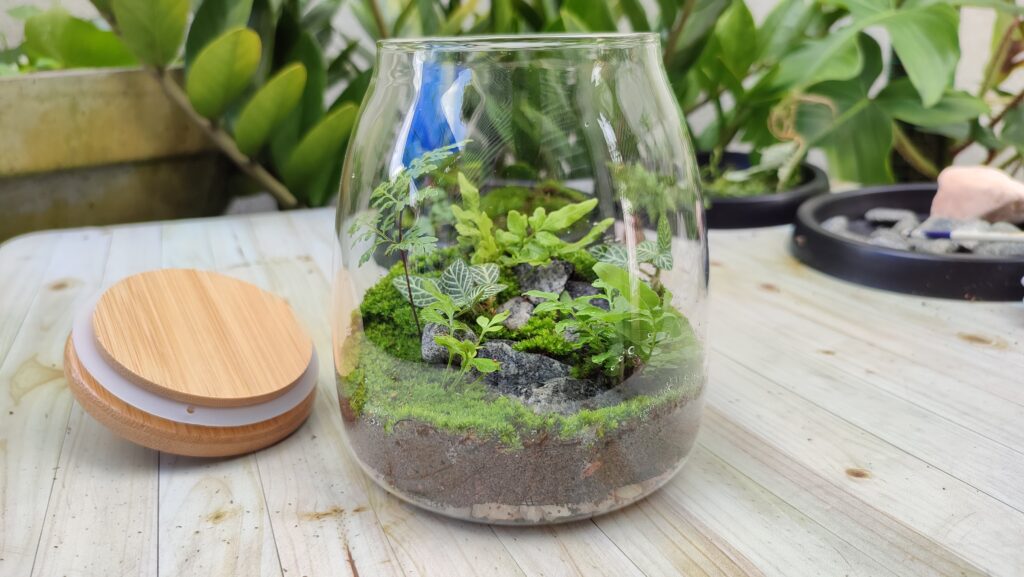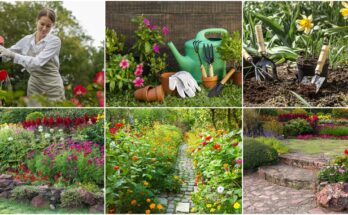Terrariums are a delightful way to bring a piece of nature into your home. These mini ecosystems are easy to create, require little maintenance, and can brighten up any space. Whether you want a simple glass jar filled with plants or a more intricate design with layers of stones and moss, making a terrarium at home is a fun and rewarding project. In this article, we’ll walk you through the steps to create your own terrarium, from choosing the right container to selecting the best plants.
Materials You’ll Need.
Before you begin, gather the necessary materials. You don’t need anything too fancy, and many items can be found around the house or at a local craft store:
Glass container: Clear glass containers work best so you can see the layers and the plants. You can use a fishbowl, mason jar, vase, or any container with an opening wide enough for you to work in.
Small pebbles or rocks: These will be used for drainage at the bottom of your container.
Activated charcoal: This helps to prevent mold and odors in the terrarium.
Potting soil: Choose well-draining soil suitable for your plants.
Decorative elements: This could include moss, stones, figurines, or decorative sand.
Plants: Choose small, low-maintenance plants that thrive in humid environments. Some great options include succulents, ferns, air plants, or moss.
Gardening tools: Small tools like a spoon, tweezers, or chopsticks can help with placing small items in the container.
Choose a Container
Select a glass container that suits the look you want to achieve. The size and shape are entirely up to you—larger containers allow for more design freedom, while smaller ones are perfect for a compact, low-maintenance setup. Make sure the container has an opening wide enough to work in, especially when adding plants or decorative items.
Create the Drainage Layer
The first layer of your terrarium should consist of small pebbles or rocks. This layer will ensure good drainage for the plants, preventing excess water from accumulating at the bottom. Pour a layer of rocks about 1-2 inches deep, depending on the size of your container.
Add Activated Charcoal
To keep the terrarium fresh and prevent odors, add a thin layer of activated charcoal over the rocks. It helps with filtration, maintaining a healthy environment for your plants.
Add the Potting Soil
On top of the charcoal, add a layer of potting soil. Make sure it’s deep enough to accommodate the roots of your plants—typically around 2-3 inches for small plants. Use your hands or a spoon to spread the soil evenly across the surface.
Plant Your Greens
This is the fun part! Choose small plants that fit your container and the overall aesthetic you want to create. Carefully remove the plants from their pots and shake off excess soil. Create small holes in the soil with your fingers or a spoon, then place the plants in the holes, pressing gently to secure them in place.
Some good plant choices for terrariums include:
Succulents: Great for dry, well-draining terrariums.
Ferns: Perfect for humid environments.
Air plants: Don’t need soil, just a spot to rest.
Moss: Adds texture and a lush green feel.
Arrange the plants in a way that looks aesthetically pleasing and allows enough space for each to grow.
Add Decorative Elements
Once your plants are in place, it’s time to decorate! Add small figurines, decorative stones, or colored sand to personalize your terrarium. You can even use natural elements like shells, crystals, or bark for a rustic look.
Water the Terrarium
Gently water the plants in your terrarium. Be cautious not to overwater, as the enclosed environment will hold moisture longer. A light misting or a few drops of water should be sufficient for most terrariums.
Place the Terrarium in the Right Location
Terrariums thrive in indirect sunlight. Place your terrarium in a spot where it will receive bright but not direct sunlight, as harsh sun can burn the plants or cause them to dry out too quickly. Keep an eye on the plants and rotate the container occasionally to ensure all parts get equal exposure to light.
Maintenance Tips
Watering: Water your terrarium sparingly. Overwatering is the most common mistake, so check the moisture level before adding more water. If the soil feels damp, hold off on watering.
Cleaning: Clean the glass container periodically to keep it clear and prevent algae buildup. You can use a soft cloth or a small sponge to wipe the inside of the container.
Pruning: If the plants grow too large, trim them back to keep the terrarium looking neat. If you’re using moss, gently remove any dead pieces to avoid decay.
Making a terrarium at home is an enjoyable and easy way to incorporate greenery into your living space. With just a few materials and some creativity, you can craft a beautiful, low-maintenance indoor garden. Whether you choose a simple, minimalist design or a lush, whimsical forest, a terrarium brings life and beauty to any room. Enjoy watching your mini ecosystem thrive!







